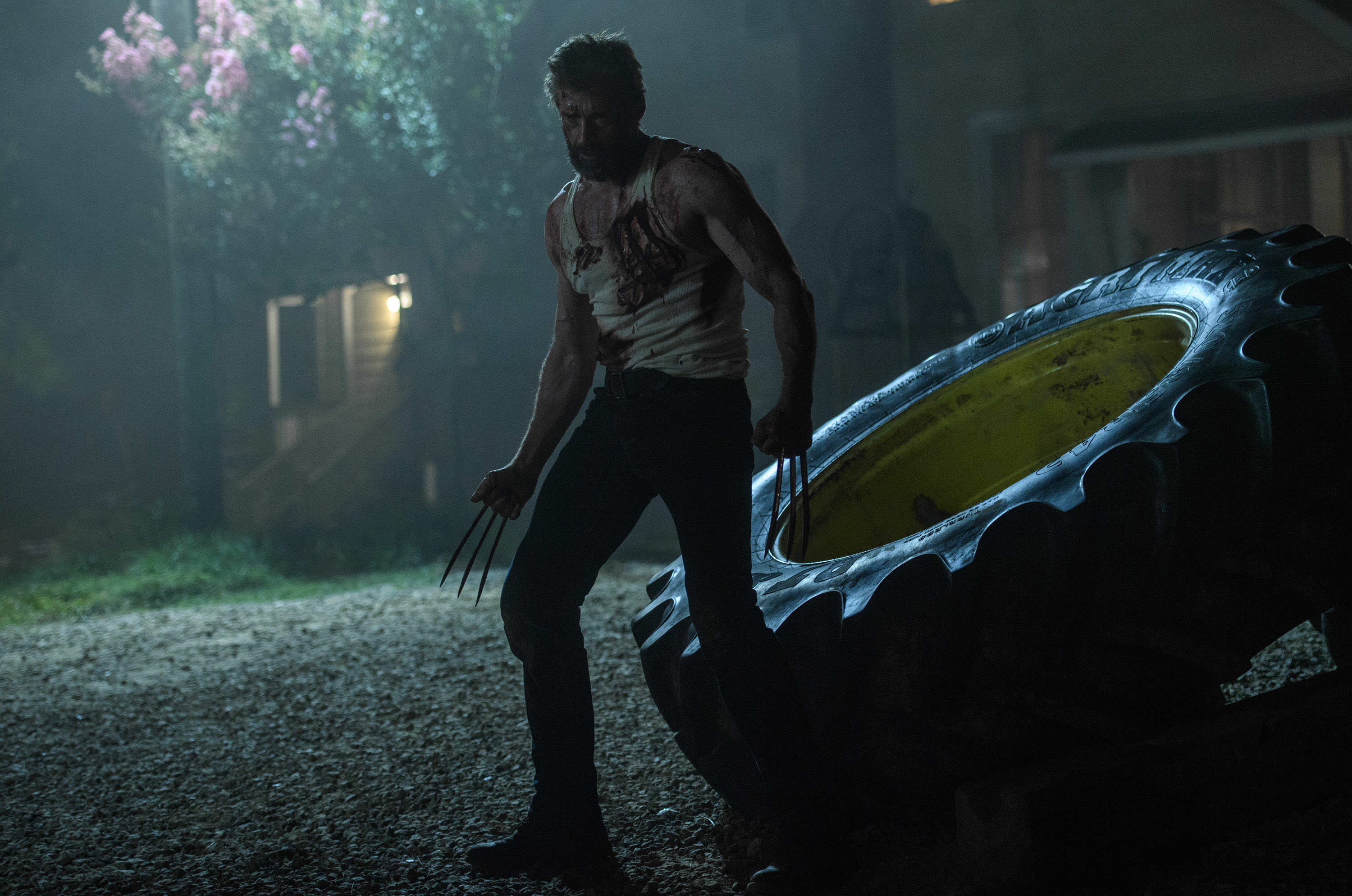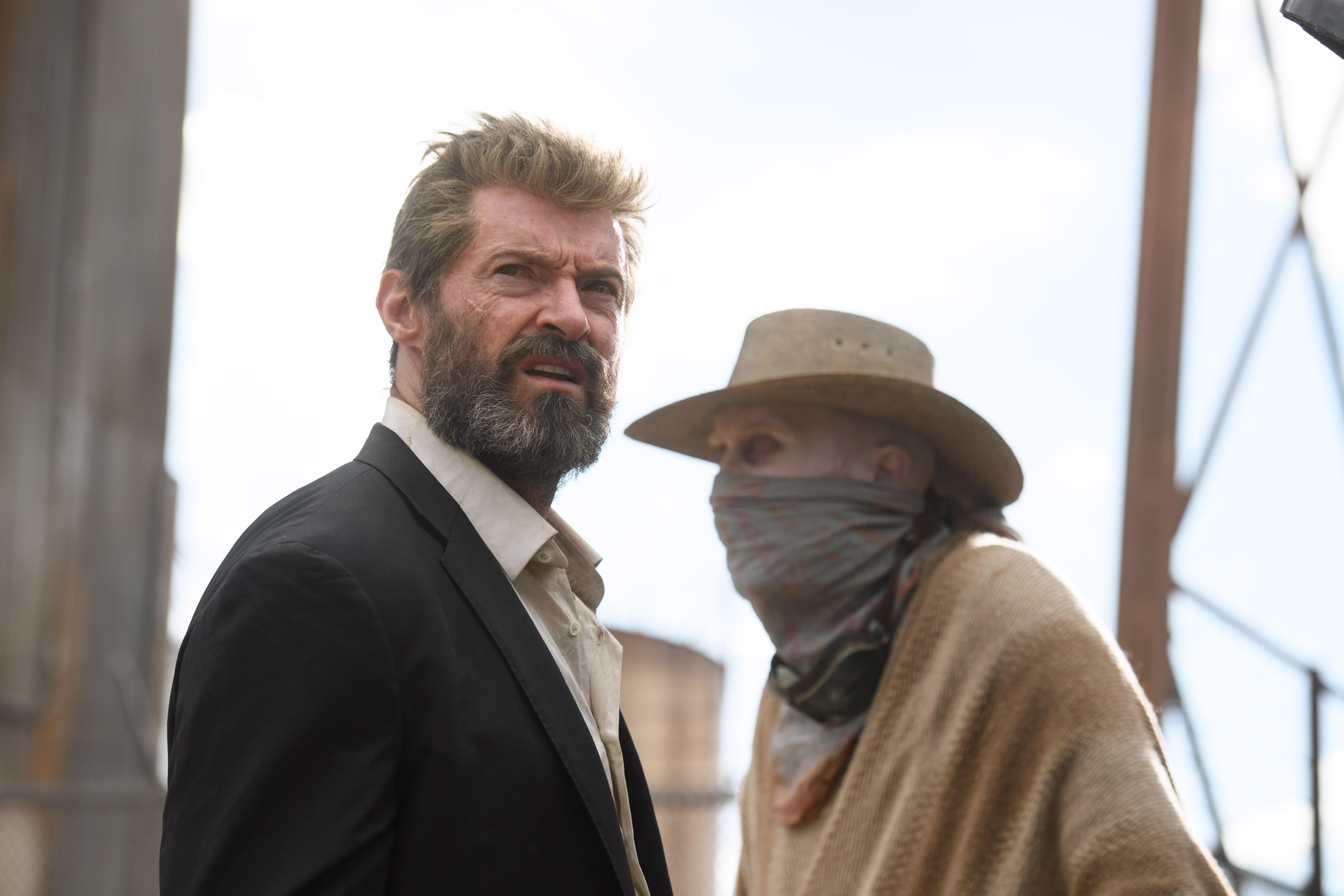The Makeup Designer Behind Logan and Star Trek Beyond
When Hollywood needs to create a character that’s cool, creepy, crazy or out of this world, they know just who to turn to. Academy Award winner Joel Harlow and his team, Morphology FX, have created special effects makeup designs for Planet of the Apes, Pirates of the Caribbean, Star Trek Beyond, and many more. Harlow has established himself as the go to designer for master chameleon Johnny Depp creating amazing transformations like “Whitey” Bulger in Black Mass and The Mad Hatter in Alice in Wonderland. In Hugh Jackman’s ninth and final turn as Wolverine, Harlow aged the star to close the book on the beloved character as Old Man Logan.
We spoke with Harlow about the amazing final chapter in the Wolverine story, creating more than 56 new aliens for Star Trek, the newest Pirates of the Caribbean and more.
Logan is intended to be the last that fans will see of Wolverine. How did you want to go about closing the book on this character?
Designing the make up for Logan required a lot of sit down with [director] James Mangold. He was making something that wasn’t your typical X-Men movie. He wanted the characters to look different and they had to live within a real world, as opposed to the X-Men films that came before that were populated by mutants with green, blue, red skin tones. The make up on Logan in particular. There are some similarities between that make up look and his look in the Old Man Logan graphic novels, but really it was designing with Hugh [Jackman] and a character that Jim really wanted to see and aging him.
What’s the technique for aging an actor without losing the essence of the character?
We basically took Hugh at the age he’s at now and we aged him for old Logan and de-aged him for X-24, because he plays those two characters. You kind of take him in the middle and bring him one way and the other way, as opposed to starting him one way and having to make that leap even farther in the other direction. In aging towards Old Man Logan, the scars played a big role in that. Weathering the skin played a big role and adding gray to his beard and to his hair was all pretty essential. I don’t think you get the essence of the iconic Wolverine character until the children shave his goatee off then you’re left with the mutton chops, which is one of the significant trademarks of Wolverine. Up until the very end he doesn’t have any of those. Certainly he has the blades coming out of his hands, which is pretty iconic for the Wolverine character. I was designing Old Man Logan as his own character without really having to adhere to anything that had come before. Of course, you are designing it on Hugh who is Wolverine, so naturally you’re going to have a lot of similarities no matter what you do.

Hugh Jackman as X-24 in Logan. Photo Credit: Ben Rothstein
Logan was really combat intensive, but Wolverine's rapid healing powers are not what they once were. What was it like designing for continuity on this film?
It was really difficult. [Wolverine] does have an accelerated healing process but it’s severely hampered since the last time we saw him. Tracking the wound to a scar to a de-emphasized scar did require a lot of continuity maintenance. And then of course, the trauma and blood splatter. At some points we were three units at the same time. We would have to go back and forth between all these units, clean it up, reapply his blood, now he’s wounded, now he’s fresh, now he’s scarred. We’d have to switch Hugh over basically as we were traveling between the sets, which weren’t very far from each other. In that last battle we were really bouncing between sets every day. That blood splatter continuity was really something you had to keep your eye on. Every scene we were shooting independently of everything else, had to have its own continuity in the context of that scene. From one shot to where he has blood on his face to another where he doesn’t back to one where he does. We were constantly taking pictures and compiling continuity notes and constantly referring back to them.
Logan had a really gritty, realistic setting for a Marvel movie. How did you make Caliban fit into this world when he has a more dramatic makeup transformation?
He is an externally depicted mutant as opposed to an internally depicted mutant, which is what I would call Logan. All of his powers are beneath the surface. Caliban wears his mutation on the surface of his skin. We had seen Caliban before in X-Men: Apocalypse and in that film he was very vibrant and jester like. What Stephen did with the character, under Jim’s direction, was quite opposite. These characters have been around for a long time. They’ve lived long lives. Their lives are very depressing at this point. They’re all reaching the end. We wanted to give him that sort of pale albinoid look that Caliban has, but desaturate it. We didn’t want anything white or anything shiny or anything too new. Everything was gray and tapped down. There were a couple more prosthetic make-ups. From 10 feet away the Lizard Boy character might look like a normal boy, except maybe without his eyebrows. It’s not until you got up close that you see his lizard-like skin texture all over his face and his arms and his hands. Because it was done in such a way with the beiges and the browns, it kind of blended in with what would be his natural skin tone as opposed to red or blue or whatever. It did fit in with this realistic mutant world.

Hugh Jackman as Logan and Stephen Merchant as Caliban in Logan. Photo Credit: Ben Rothstein
You’ve designed some really beloved characters. Do you refer to the source material for films like Logan and Star Trek?
For Star Trek we built 56 brand new aliens. The only real references or aliens that we brought back were Keenser and Spock. Everyone else was entirely new. Of course, dealing with something like Star Trek you’re dealing with an aesthetic you have to maintain. That aesthetic that is mainly a Star Trek alien is primarily always humanoid and make up and prosthetic driven. If you can nail that, then it fits into that world. In something like Logan, you don’t want the make up to stand out. You don’t want your make up to get in the way of a performance or in the way of the story. In something like Star Trek you have a little more leeway, because the make up should stand out. The characters are vibrant and should resonate as something non-human.
Wow, how do you even design 56 aliens?
It was a dream come true! I had a great crew on Star Trek. I basically had 60 people working for me and they were all fans of Star Trek. To get to design another alien on top of the 55 we had already made to bring it to 56 was a gift rather than a chore.
What kind of preparation do you need to do before you get the actor in the makeup chair?
The idea is, with something like Star Trek, you try to test everything. I personally tested all 56 make ups. When we got up to Vancouver where we were shooting, we would have casting sessions. I would fit the prosthetics on people, and whoever fit the pieces would be that character. Typically you want to test everything in advance. You try to test them, if it’s the lead, on the actor or actress, and then make any alterations before the day.
Pirates of the Caribbean is a franchise you know well by know. What work did you do on Pirates of the Dead Men Tell No Tales?
I did the additional photography department heading on Dead Men Tell No Tales. I wasn’t the department head on the actual film, because we were shooting simultaneously with Star Trek. It wasn’t until they wrapped and they realized they needed another month or so of filming that I came on and basically picked up where the original crew had left off. There are a couple of characters that we came up with for those reshoots, which are a surprise. I got to see the film and it’s fantastic.
The characters in Pirates of the Caribbean have really rich backstories. How does that inform your designs?
One of my favorite make-ups from all the films is the Bootstrap Bill make up that I executed, designed by Crash McCreery. It went through a six page aggressive incrustation as I call it. The backstory of that character we all knew because it was spelled out in the story. He was tied to a cannon and thrown overboard, and Davy Jones came to him and he chose to serve 100 years before the mast, instead of dying in the water. And he’s gradually being consumed by the Flying Dutchman over the course of film 2 and 3. In translating that backstory, there certainly is a lot of artistic license. Even in translating a two dimensional design, a pencil design, there’s a lot of artistic license. You’ve got to make it work in the practical make up. And Crash is a brilliant designer, so to start from his illustrations, that was a real treat. I have all of those illustrations up in my studio. I get to see them every day.
Characters from Curse of the Black Pearl have become iconic now like Johnny Depp’s eyeliner look. How have characters like Jack Sparrow and Captain Barbosa evolved?
The eyeliner, that was Johnny! That was a brilliant stroke. He basically designed Jack Sparrow. That eyeliner, the idea behind that, is that he’s on the water, he’s on bright sand. Same thing that football players do when the black lines under their eyes it helps with the reflection and the glare. It also looks cool. You know Geoffrey Rush’s Barbosa character has sort of matured over the course of the franchise. He joined the opposite team. He joined the crown, the privateer, instead of a pirate. What was his enemy is now his ally, but he was always working for himself. It’s reflected in the make up, in his wigs, in his beard and his accoutrement. They’ve all kind of matured, the ones that have reoccurred in the subsequent films from the first one.
Featured image: Hugh Jackman as Logan in Logan. Photo Credit: Ben Rothstein



